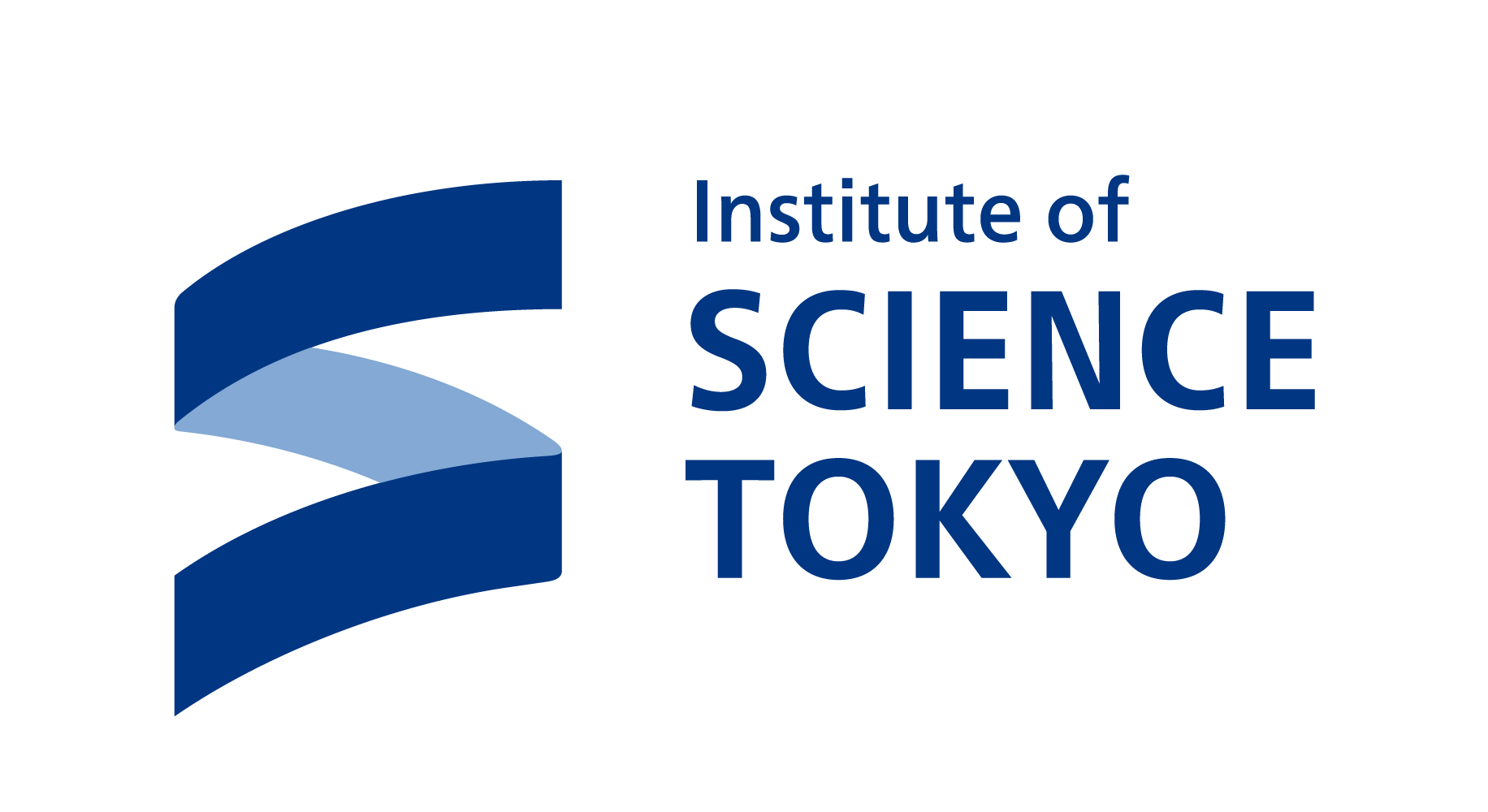
水処理系での汚染物質の反応予測・評価のための理論モデルの構築: 量子化学計算と分子動力学シミュレーション / Development of a theoretical model for predicting reaction pathway of contaminants in water treatment systems: Quantum chemical calculation and molecular dynamic simulation
水環境工学分野は、歴史的に上下水道を対象とした衛生工学を起源とし、その後、環境汚染(公害)等を組み込み体系化されてきました。水質汚染や衛生を対象とするため、生物学、化学、医学などの実験・調査を主体とした「経験的な学問」という特徴があります。一方、新興汚染物(医薬品や農薬等、現代社会では10万種を超える化学物質を使用)による水源水質の悪化や、水不足に伴う下水処理水の再利用増大が懸念される未来社会において、持続可能な水利用・水環境を実現するためには、水中のあらゆる物質に対してその動態を事前に把握し、包括的な監視・管理体制を構築していくことが望まれます。そこで、従来のような水質指標のモニタリングによる水処理の効率性評価のようなempiricalな手法に加え、理論的手法で得られる予測値と補完しながら、処理効率や物質動態評価を行っていく必要があると考えています。本研究テーマでは、原子の最も基本的なふるまいを記述する量子化学・理論化学などの異分野の知識・技術を活用し、水処理系での汚染物質の反応経路網を精密に予測可能な理論モデルの構築を目的としています(図)。これまでに、科研費等のプロジェクトを通して、ヒドロキシラジカルによるフェノールの酸化分解反応を対象とした量子化学計算等を実施し、フェノール系汚染物質の分解メカニズムや反応経路の理論的推定を行っています。本研究を推進することにより、生体に有毒な中間生成物を回避する反応経路の選択や、反応を効率化させた省エネ型処理法の開発にもつながると考えられます。
Historically, the water environment engineering field originated in sanitary engineering for water supply and sewage systems and was later systematized to include environmental pollution. Since the water pollution and sanitation is characterized as an empirical discipline that focuses on experiments and investigations in biology, chemistry, medicine, etc. On the other hand, in the future, when there are concerns about the deterioration of water source quality due to emerging pollutants (more than 100,000 chemical substances, including pharmaceuticals and pesticides, are used in modern society) and the increased reuse of treated sewage water due to water shortages, we ideally need to understand the dynamics of all molecules present in water in advance to realize sustainable, safe and secure water use. It is desirable to establish a comprehensive monitoring and management system. Therefore, it is necessary to evaluate the efficiency of water treatment by monitoring water quality indices using classical empirical approach, as well as by complementing them with predicted values obtained by theoretical methods. The objective of this research is to construct a theoretical model for precise prediction of the reaction path of pollutants in water treatment systems by utilizing knowledge and techniques from different fields, such as quantum chemistry and theoretical chemistry, which describe the most fundamental behavior of atoms (see figure). So far, through a project funded by a Grant-in-Aid for Scientific Research (KAKENHI), we have carried out quantum chemical calculations for the oxidative decomposition of phenol by hydroxyl radicals, and theoretical estimation of the decomposition mechanism and reaction pathways of phenolic pollutants is being carried out. This research will lead to the selection of a reaction pathway that avoids toxic intermediates for living organisms and to the development of an energy-saving treatment method that improves the efficiency of the reaction.
量子化学計算によるOHラジカルを介したフェノール酸化反応機構の予測 / Prediction of reaction mechanism for OH radical-mediated phenol oxidation using quantum chemical calculation (figure from Dwinandha et al 2022)

OHラジカルによるフェノールの酸化経路 / Phenol oxidation pathway with hydroxyl radical (figure from Dwinandha et al 2022)
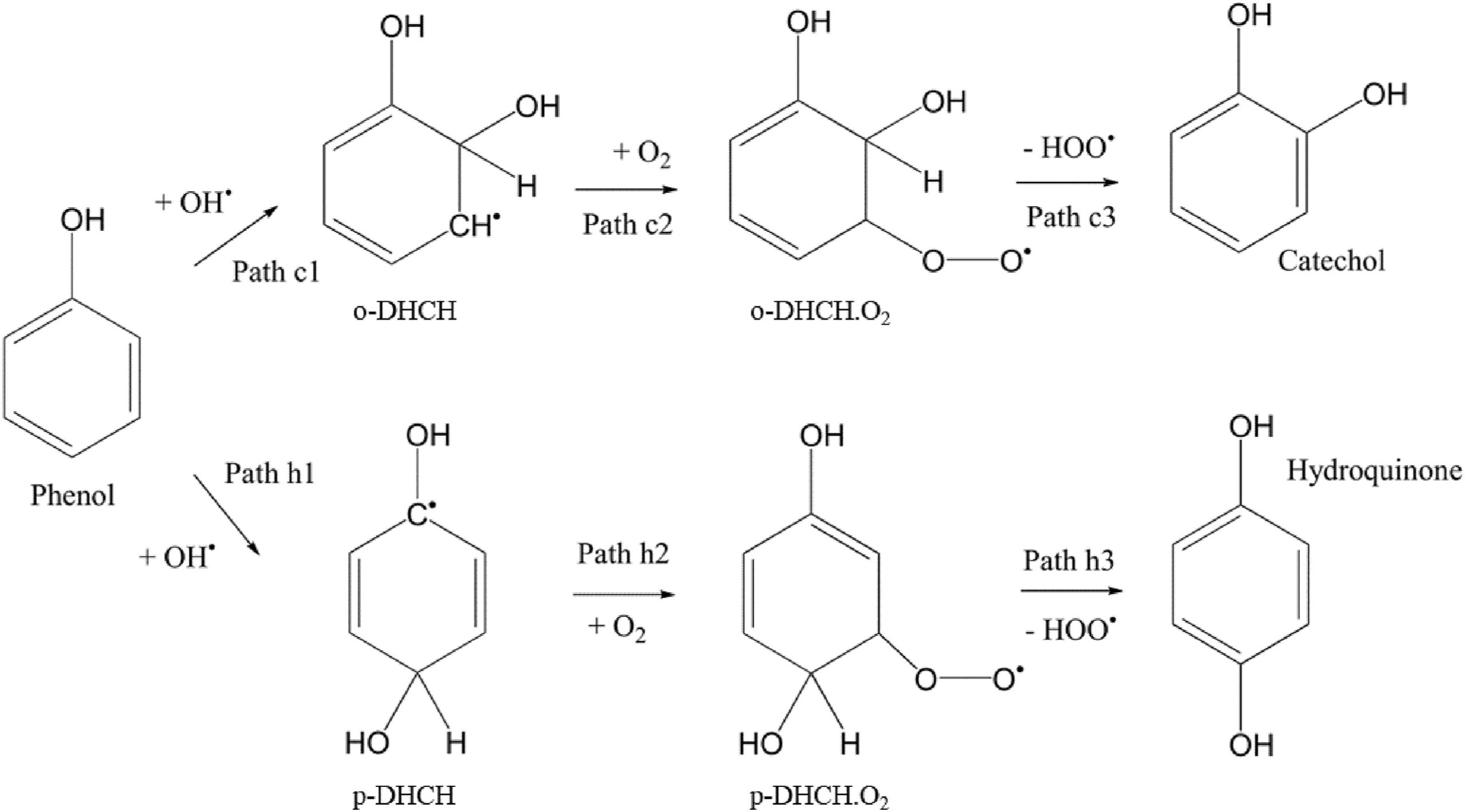
フェノールからカテコールおよびヒドロキノンへのフェノール酸化経路のエネルギープロフィール / Energy profile of phenol oxidation pathway to catechol and hydroquinone relative to phenol (figure from Dwinandha et al 2022)
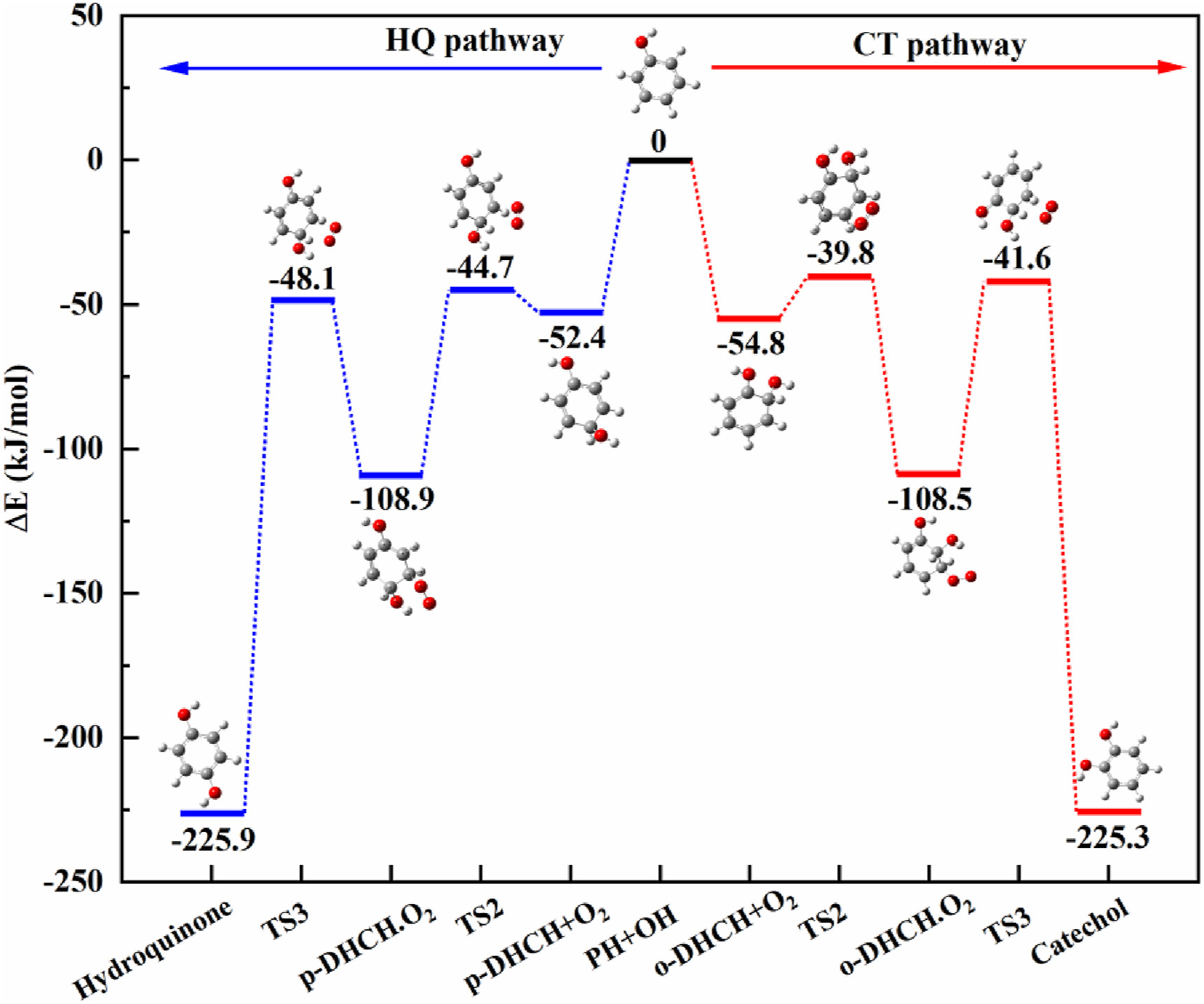
新興汚染物質による環境水汚染と高度処理(背景)/ Environmental Water Pollution and Advanced Treatment by Emerging Contaminants (Background)
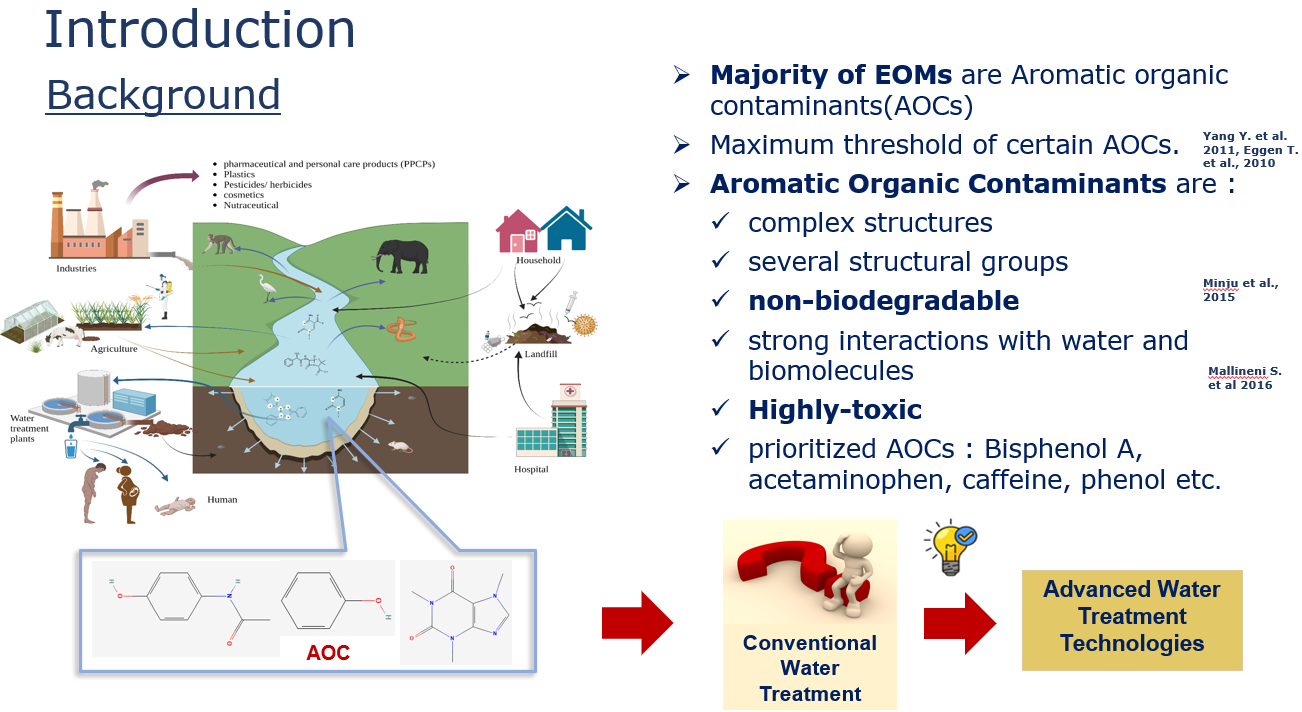
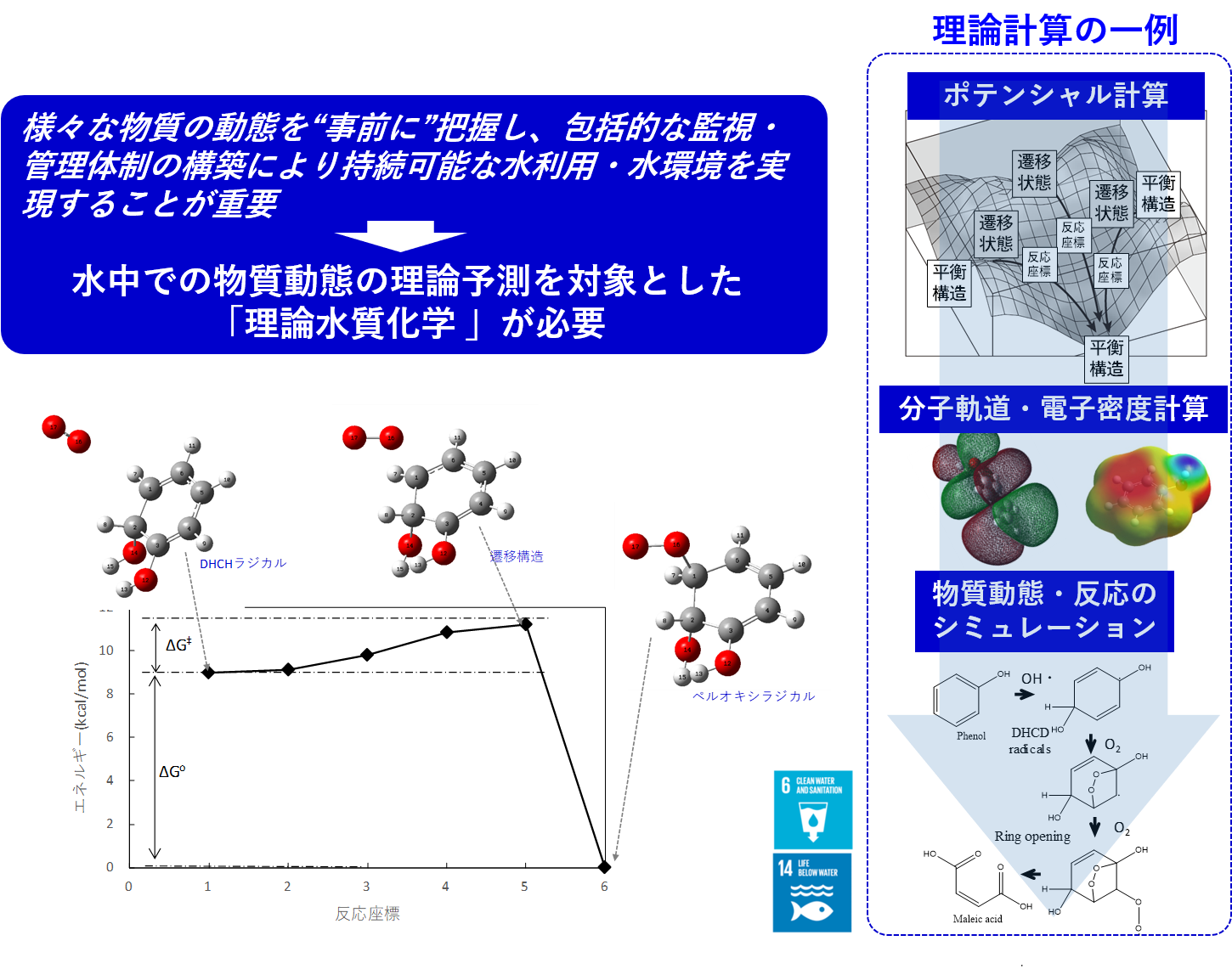
関連文献 / Reference
- D Dwinandha, B Zhang, M Fujii, Prediction of reaction mechanism for OH radical-mediated phenol oxidation using quantum chemical calculation,Chemosphere 291, 132763, 2022
- 藤井学, 量子化学計算を用いたフェノール酸化分解過程での反応点の推定, 土木学会論文集G(環境), (社)土木学会, 75 巻 7 号 III_225-III_235, 2019.
- 科研費挑戦的研究(萌芽) 2019-20年度「量子化学計算による高度処理での有機微量汚染物質の反応経路解析」(研究代表)等

